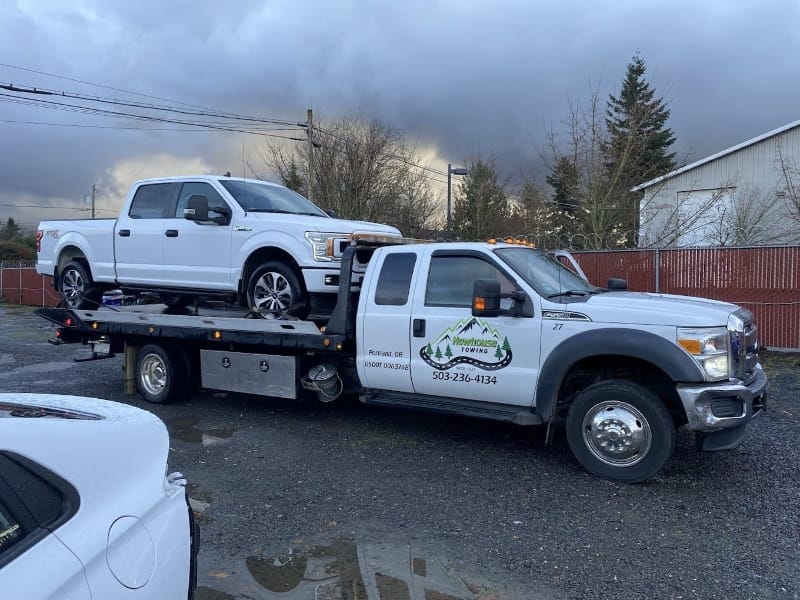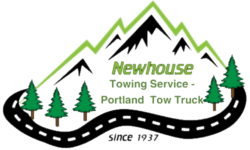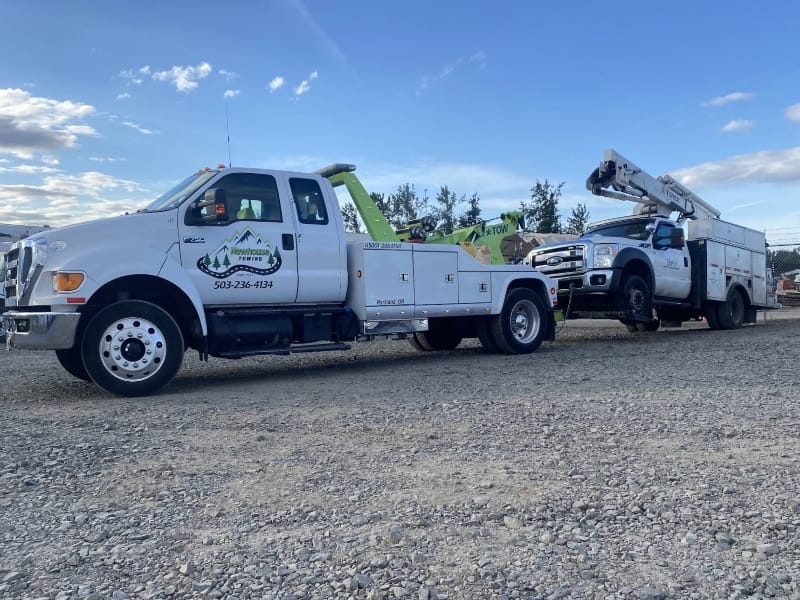Towing Down Under
US-26 towing calls often take us to underground parking garages where things get complicated fast. Low clearance towing is one of the most technical jobs we handle. It’s never just about hooking up a truck and moving a vehicle. These recoveries usually start with someone stuck after misjudging a ramp, a turn, or a clearance bar. When we arrive, we’re facing a structure with ceilings barely above six feet, tight ramps, and little room to maneuver. We walk the entire route before moving any equipment. We inspect for low-hanging pipes, sprinkler systems, and tight turns. This allows us to plan the exit strategy with full awareness of the hazards ahead.

Hazards You Don’t See Until It’s Too Late
Garages and underpasses are full of hidden risks. US-26 towing calls could involve cars wedged beneath pipes or stuck in corners that left barely enough room for a person to walk through, let alone operate a recovery rig.
We assess whether the car can roll, whether it’s bottomed out, and whether it has undercarriage damage. Go-jacks and skates let us reposition vehicles manually in tight spaces. If a vehicle is stuck on a slope, we might use a winch line to slowly move it to more level ground. One wrong move in these scenarios can do more damage than the breakdown itself.
How We Tackle Confined Recoveries
Standard wreckers won’t work here. On US-26 towing jobs that lead into downtown garages, we rely on low-profile trucks that can clear tight height restrictions while carrying all the necessary recovery tools. These trucks allow us to access spaces without risking property damage.
We often use portable lighting, skates, and inflatable air cushions to lift or shift a vehicle just enough to clear the obstruction. Visibility is limited in these structures, so every movement has to be intentional and fully planned.
Planning Before We Tow
Before we roll out for a US-26 towing call in a low-clearance space, knowing the following facts beforehand is helpful:
Is there a working elevator or stair access for equipment?
How low is the actual clearance?
How tight are the ramps and turns?
Will the vehicle roll, or are the wheels locked or damaged?
We can customize our gear loadout based on this information. For instance, if the vehicle is trapped on a slope or wedged behind a concrete pillar, we bring more lifting gear and extra lighting.
Precision Under Pressure
Towing underground is slow work, but the pressure is real. Traffic builds outside the garage, tenants want their spots back, and property managers want damage avoided at all costs. We train for that pressure. Our crews regularly practice low-clearance recoveries so we can perform smoothly under stress.
Some of the most demanding US-26 towing calls could come from garages beneath high-rise offices, where time and space are both in short supply. We take our time to do it right, and we don’t move until the path is fully cleared and the plan is in place.

Newhouse Towing: Why We’re the Ones Who Get the US-26 Towing Call
Low-clearance recoveries might not seem dramatic, but they take more care than almost anything else we do. When you’re buried deep in a garage with no room to maneuver, experience matters.
At Newhouse Towing, we’re known for handling the US-26 towing calls with focus. If your vehicle is stranded in a tight, low-ceilinged structure, we’ll bring the right tools, make the right calls, and guide it out safely. One inch at a time.

